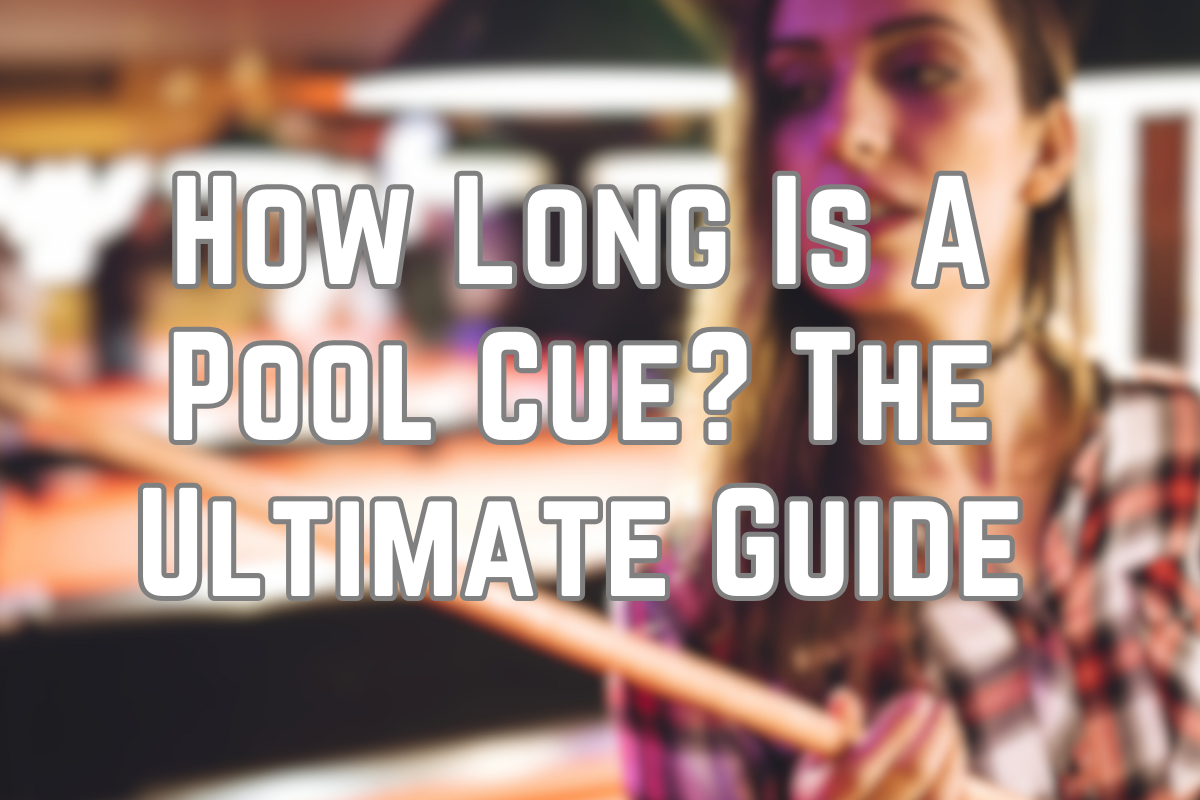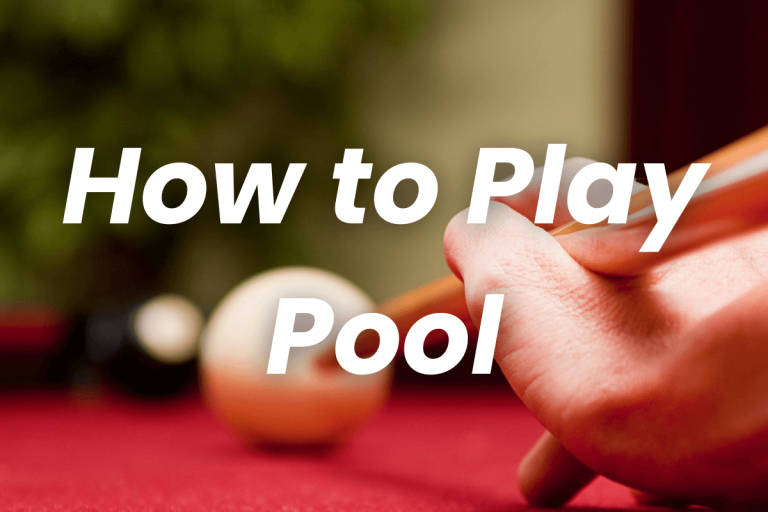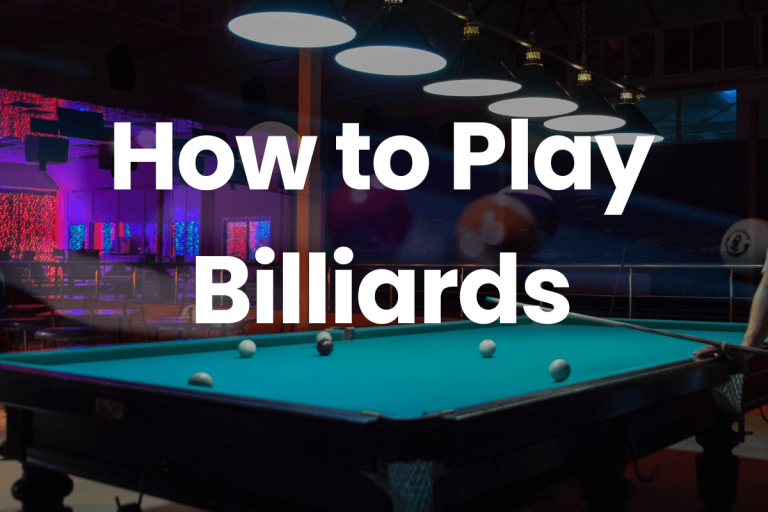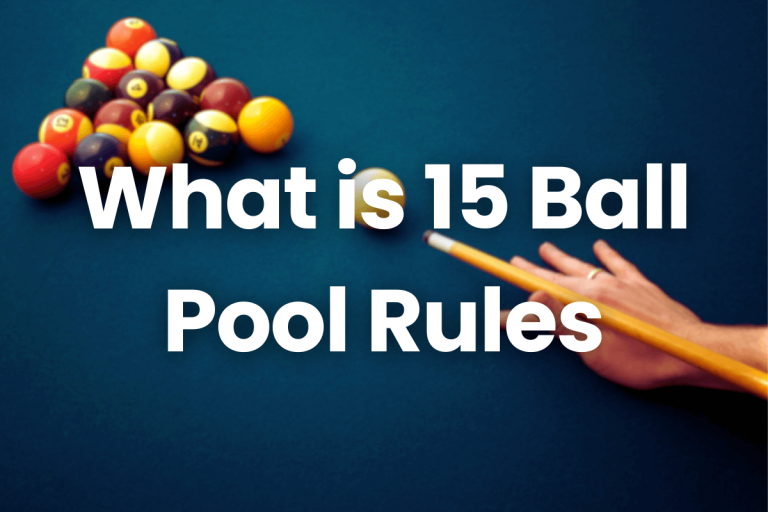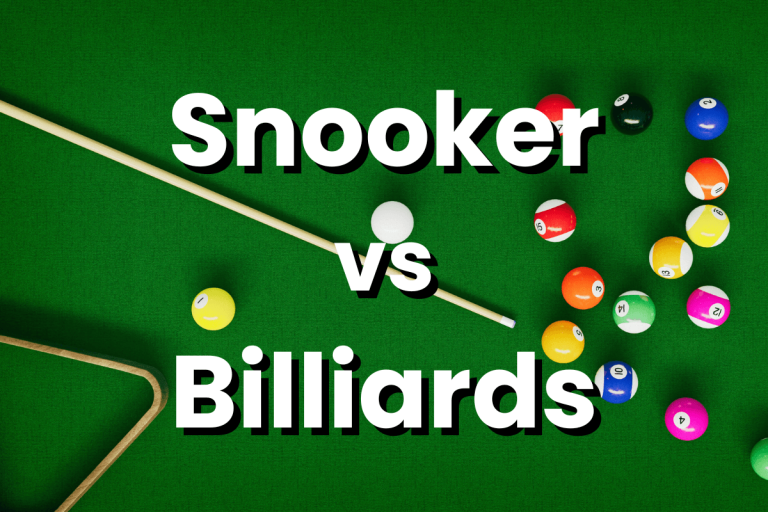How Long is a Pool Cue? The Ultimate Guide (2024)
Ever notice how some players effortlessly dominate the pool table, sinking shots with precision and grace, while others struggle to even reach the cue ball comfortably? The answer might surprise you: it all boils down to how long their pool cue is.
This comprehensive guide, How Long is a Pool Cue? The Ultimate Guide is your one-stop shop for understanding the fascinating world of pool cue lengths. We’ll delve into the standard lengths used by most players, explore the wide range of variations available, and equip you with the knowledge to choose the perfect cue length that elevates your game to the next level.
Whether you’re a seasoned pool shark or a curious beginner, this guide empowers you to discover the secret weapon behind smooth, controlled shots and unlock your full billiards potential. So, grab your virtual cue (figuratively, of course) and prepare to embark on a journey that answers the age-old question: how long should your pool cue be?

How Long is a Pool Cue? The Ultimate Guide
Standard Pool Cue Lengths: Finding Your Perfect Fit
When it comes to pool cues, one size certainly doesn’t fit all. While you might envision a single standard length ruling the pool halls, the reality is much more diverse. This section unveils the spectrum of pool cue lengths and the factors influencing your ideal choice.
The Champion’s Choice: 57-59 Inches
The most common pool cue length falls within the 57-59 inch range. This “sweet spot” is generally considered ideal for most adults due to its versatility. It allows for a comfortable full-body extension for most players, enabling smooth cueing and control over your shots. Imagine yourself confidently reaching any part of the table without awkward adjustments – that’s the power of the standard cue length.
Beyond the Standard: Exploring Variations
While the 57-59 inch range reigns supreme, the pool cue world offers a surprising variety. Let’s delve into the shorter and longer variations catering to specific player profiles:
- 36-48 Inches: These shorter cues are perfect for children and shorter adults. They ensure comfortable play and proper form without compromising technique due to excessive reach. Think of them as the training wheels of the pool cue world, fostering a love for the game from a young age or accommodating players of a smaller stature.
- 60-62 Inches: These longer cues cater to taller players who might find the standard length slightly restrictive. They offer the extra reach necessary to maintain proper form and comfortable stance, especially for individuals with a longer arm span.
The Key Factors: Choosing Wisely
Now that you’re familiar with the standard and variations, understanding the factors influencing your ideal choice is crucial. Here are the key considerations:
- Player Height: This plays a significant role in determining the most comfortable reach. Taller individuals might require a longer cue, while shorter players benefit from the shorter variations.
- Arm Length: Similar to height, arm length impacts your comfortable reach and stroke. Individuals with longer arms might find the standard length sufficient, while those with shorter arms might favor a shorter cue.
- Playing Style: Your preferred playing style can also influence your choice. Aggressive players who favor powerful strokes might opt for a slightly longer cue for added leverage, while finesse-oriented players might prefer the control offered by a standard or shorter cue.
Breakdown of Different Cue Lengths: Finding Your Perfect Fit
Now that you understand the standard pool cue length and its variations, let’s delve deeper into each option, exploring their specific target audiences, benefits, drawbacks, and popular examples:
1. 36-inch Cues:
- Target Audience: Primarily designed for children and shorter adults (below 5 feet).
- Benefits:
- Comfortable reach: Ensures proper form and technique for younger players or those of shorter stature.
- Lightweight: Easier to handle and control for developing players.
- Drawbacks:
- Limited reach: May restrict shot options and control for taller individuals.
- Might feel like a “toy cue”: May not offer the same feel and responsiveness as standard or longer cues.
- Examples: Many starter cue sets and junior cues fall within this range.
2. 48-inch Cues:
- Target Audience: Ideal for shorter adults (5 feet to 5 feet 6 inches) and youths transitioning from shorter cues.
- Benefits:
- Provides more reach: Offers greater versatility compared to 36-inch cues while remaining comfortable for most players within this height range.
- Good transition cue: Suitable for players growing out of shorter cues and seeking a more standard feel.
- Drawbacks:
- May still be restrictive: Might not be ideal for taller individuals seeking maximum reach and leverage.
- Limited selection: Compared to the standard length, the variety of 48-inch cues might be smaller.
- Examples: Some travel cues and specific youth cue models fall within this category.
3. 57-59 inch Cues (Standard Length):
- Target Audience: Considered the most versatile option for most adults (above 5 feet 6 inches).
- Benefits:
- Widely available: Offers the most extensive selection of cue designs, materials, and weights.
- Comfortable reach: Allows for full-body extension and proper form for a majority of players.
- Versatility: Suitable for various playing styles and shot techniques.
- Drawbacks:
- May be too long for shorter players: Can lead to awkward posture and difficulty reaching the cue ball comfortably.
- Requires proper technique: May not be ideal for beginners who haven’t yet developed proper form and control.
- Examples: The vast majority of pool cues available in stores and online fall within this standard length range.
4. 60-62 inch Cues:
- Target Audience: Primarily suited for taller adults (above 6 feet) with longer arms.
- Benefits:
- Extended reach: Provides the extra length needed for taller players to maintain proper form and comfortable stance.
- Enhanced leverage: This may offer a slight advantage for powerful stroke styles.
- Drawbacks:
- Limited availability: The selection of cues in this length range might be smaller compared to the standard length.
- Awkward for average players: Can be cumbersome and difficult to maneuver for individuals of average height or shorter.
- Examples: Specific high-end cue models and custom-made cues cater to this niche audience.
Choosing the Right Length for You: The Perfect Fit Awaits
Now that you’ve explored the diverse landscape of pool cue lengths, it’s time to find your perfect match. Remember, the ideal cue length isn’t a one-size-fits-all formula; it’s a journey of discovery and personal preference. This section equips you with the tools and knowledge to embark on this exciting quest.
Finding Your Goldilocks Cue: Interactive Exploration (Optional)
While we can’t physically place a cue in your hand through this guide, consider exploring interactive resources online! Some websites offer quizzes or guides that take your height and arm reach into account, providing personalized recommendations for your ideal cue length. Remember, these resources are a starting point, and hands-on experimentation remains key.
Beyond the Numbers: Additional Considerations
While height and arm length play a significant role, other factors can influence your choice:
- Comfort: Ultimately, the cue should feel comfortable and balanced in your hands. Don’t hesitate to grip different lengths and see which one feels most natural and allows for smooth, controlled strokes.
- Playing Style: Are you a power player who favors forceful strokes? A finesse player who prioritizes precision? Your playing style can influence your choice. Longer cues might offer an edge for power, while shorter or standard lengths might be better suited for finesse-oriented players.
- Personal Preference: Don’t underestimate the power of personal preference. If a specific cue length, regardless of the “rules,” feels intuitive and allows you to play at your best, embrace it!
Tips for Beginners: Choosing Your First Cue
As a beginner, navigating the world of pool cues can be overwhelming. Here are some pro tips to help you choose your first cue:
- Start with a standard length (57-59 inches): This is the most versatile option and a good starting point for most adults.
- Try different lengths before buying: Visit a billiard supply store or pool hall and test out cues of various lengths. See which one feels most comfortable and allows you to execute shots with ease.
Focus on fundamentals: Don’t get caught up in fancy features or expensive cues initially. As you develop your skills and playing style, you can explore more specialized options later.
Conclusion
We’ve embarked on a journey through the fascinating world of pool cue lengths, exploring the standards, variations, and factors influencing your ideal choice. Remember, the perfect cue length isn’t a universal answer; it’s about finding the one that feels comfortable, allows for proper form, and elevates your game. Embrace hands-on exploration, consider additional factors beyond measurements, and don’t hesitate to experiment! Share your experiences with different cue lengths in the comments below, and if any questions linger, feel free to ask! Now, go forth and conquer the pool table with your perfectly sized-weapon!
FAQs
I’m a lefty. Does cue length matter differently for me?
Not necessarily! Cue length selection focuses primarily on height, arm reach, and playing style, not handedness. Whether you’re a righty or a lefty, the same principles apply when choosing your ideal cue. However, it’s important to ensure a comfortable bridge hand position regardless of your dominant hand. Experiment with different bridge placements on various cue lengths to find the combination that feels most natural and allows for a solid, stable bridge during your shots.
I’m worried about buying the wrong cue length. What if I make a mistake?
Don’t fret! Choosing the perfect cue length is a personal journey. If you’re unsure, visit a billiard supply store or pool hall and try out different lengths. See which one feels most comfortable and allows you to execute shots with ease. Remember, most stores have return or exchange policies if you end up with a cue that doesn’t suit you perfectly. So, experiment with confidence, ask questions, and don’t hesitate to seek guidance from experienced players or store staff. The perfect cue is out there waiting for you, and the journey of finding it is part of the fun!sharemore_vert

